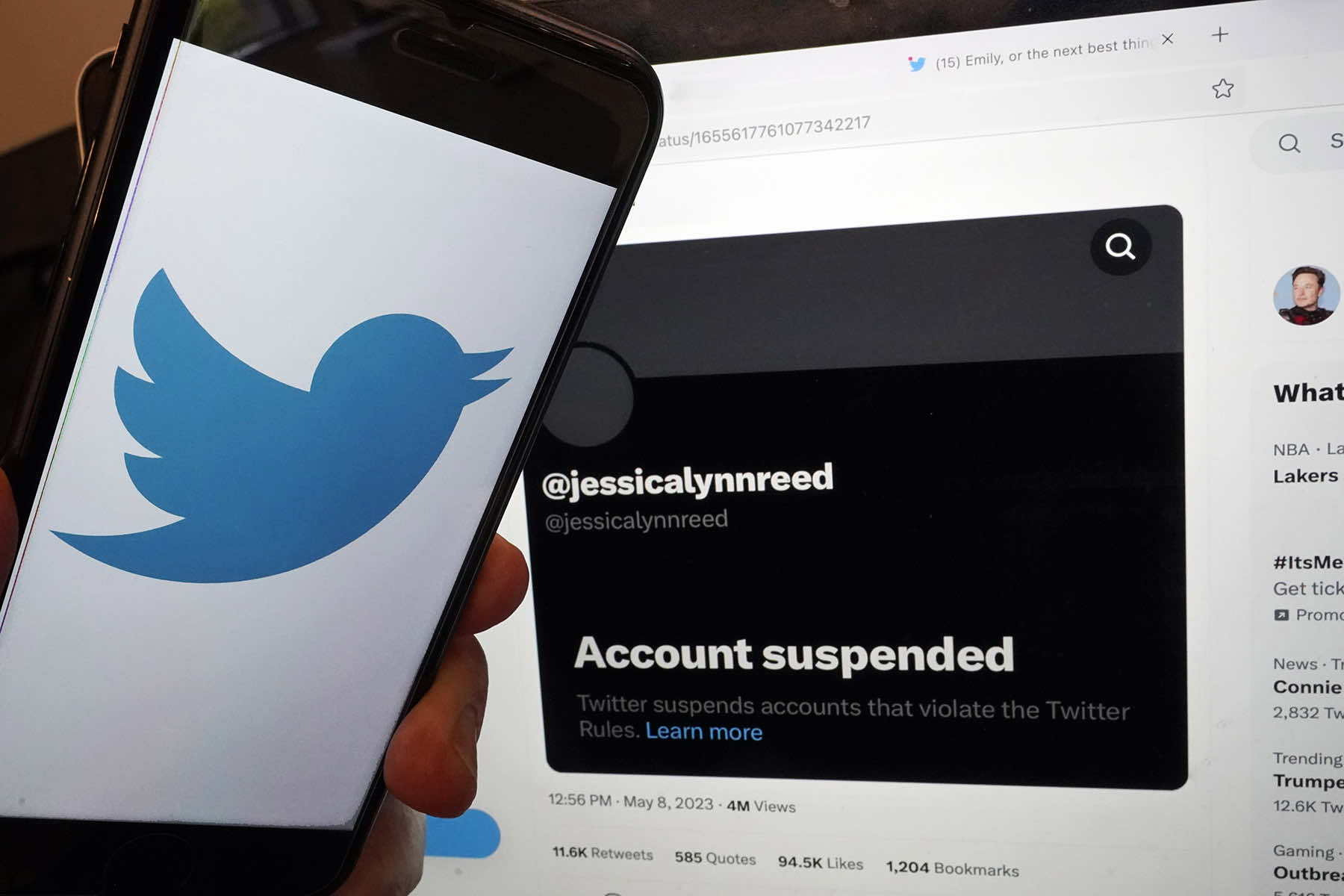
Emily Reed lost her younger sister Jessica more than 10 years ago. For much of the last decade, she has visited Jessica’s Twitter page to help “keep her memory alive.”
Twitter became one of the places where Emily processed her grief and reconnected with a sister she describes as almost like a twin. But Jessica’s account is now gone.
Last week, owner Elon Musk announced Twitter would be purging accounts that have had no activity for several years. That decision has been met by an outcry from those who have lost, or who fear losing the thoughts and words of deceased loved ones linked to now-inactive accounts.
Reed immediately returned to Jessica’s page as she had done a day or two earlier after learning of the purge. In place of Jessica’s page was an “account suspended” message that suggested it may be in violation Twitter rules.
Reed’s tweet recounting her shock over the loss of the account has received tens of thousands of responses. Others shared similar experiences of pain upon learning that the account of a deceased loved one had vanished.
“Having these digital footprints… is super important to me,” said Reed.
The advent of social media has come with new way in which people mourn, returning to the place where they connected with friends and family in the past. In addition to memories and physical traces left behind, snippets of lives are have are now being captured in the digital space.
It is something that social media platforms have wrestled with for recent years. Twitter backed off an attempt to purge inactive accounts in 2019, years before Musk arrived, due to a similar backlash.
Other social media sites have found ways to allow people to mourn those they’ve lost.
Facebook and Instagram allow users to request an account be deactivated, or a memorialization of the account. Memorialized accounts show the word “Remembering” next to the person’s name.
“In this modern age, we have these electronic reminders of people — (including) little snippets of a thought they had on a particular day or pictures that they shared,” said Shira Gabriel, professor of psychology at University at Buffalo. Looking through a late loved one’s social media can be both a healthy way to process grief and gather as a community in remembrance, Gabriel said.
The prospect of that resource disappearing “can bring about a sense of mourning again,” Gabriel said. “There is a real psychological cost of getting rid of this digital thumbprint that was left behind and this ability for community members to gather in one spot.”
It is unknown if Musk will backtrack on the decision to purge. The billionaire CEO of Tesla has launched policies that have rattled users and advertisers alike and shown little interest in amending those policies in response.
Musk named a new CEO last week, Linda Yaccarino, a former NBCUniversal advertising executive, who will have her hands full with a platform seemingly now in a perpetual state of chaos.
Deleting inactive accounts can be seen as fulfilling a promise Musk made when he bought the company, particularly winnowing down junk accounts and bots, said Samuel Woolley, an assistant professor at the University of Texas at Austin’s School of Journalism and Media.
There are good reasons to preserve inactive accounts, and also reasons to delete them, Woolley said, but he is leery of the “one-size-fits-all” approach.
Advocates of purging accounts cite skewed metrics caused by inactive accounts or bogus on social media platforms. Yet on top of emotional pain for some users mourning late loved ones, deleting inactive accounts could also mean losing tweets that documented historical events, commentary and breaking news on the app over the years.
“Twitter operates in many ways like a library of data,” Woolley said. “Just because someone hasn’t been active for 30 days or a few years, doesn’t mean their tweets don’t still have a great amount of relevance.”
Musk did say the reasoning behind removing inactive accounts was to free up unused Twitter handles, or user names, and that those inactive accounts would be archived.
What exactly that means is not known — including what inactive accounts will look like when they’re archived, and whether they’ll be easily accessible. Other details of the plan are also unclear, such as the number of accounts to be removed and whether the policy will be evenly enforced.
While Reed and others saw the inactive accounts of loved ones disappear last week, the account belonging to the late father of controversial internet personality Andrew Tate still appears to be on the site, for example.
On Twitter, Tate said he was fine with Musk’s decision, but asked that his father’s account remain active as he “still (reads) his account daily.”
Picking and choosing accounts for deactivation would “create precisely the kind of tiered system that Musk says he wants to avoid,” Woolley said.
According to Twitter policy, the social media platform determines an account’s inactivity through log-ins. Twitter says that users should log in at least every 30 days.
Twitter users are able to download an archive of their own data through the app, but not for accounts they don’t possess login credentials. Reed, for example, noted that her family wasn’t able to get into Jessica’s account over the last 10 years. The only traces they have now are some screenshots that Reed’s other sister luckily captured before the purge.
Reed talks about the importance of Jessica’s Twitter and Facebook pages during her journey with grief — from following her sister’s difficult journey with cystic fibrosis, a progressive genetic disorder that Reed also has, to cherishing tweets that showed “the joy and… the vibrancy that came out of her words.”
Over time, the image and memories of someone who has passed away can slowly change in your mind — “like a fading photograph,” Reed said. Having online resources, she added, can help keep a “person’s memory alive, in a way that just your own personal memory can’t.”













